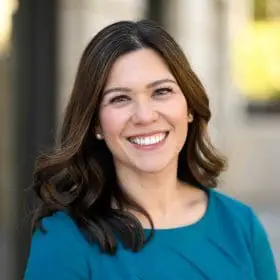
Insights
October 20, 2020
There’s a lot Going On… Thoughts on Philanthropy in the Time of COVID-19
In Philanthropy, Wealth Strategy

October 20, 2020
I know I’m one of the lucky ones. Coldstream has weathered the COVID-19 storm well. Others have not been as fortunate. With furloughs, layoffs, and all the other challenges we are facing in 2020, people are hurting. And so are charitable organizations whose mission it is to help. Giving back now is more important than ever.
I head up the Philanthropy Committee here at Coldstream. We’ve got a great team whose mission is to think collectively and creatively around giving back in our community. Coldstream makes monetary donations for sure, but much of our commitment to the greater good takes the form of volunteering or in-kind donations. Pre-COVID-19, we were able to bring unique opportunities to our team members – enabling our employees to really experience the beauty of helping others through hands-on experiences. One of the most meaningful events we organized was in partnership with Mary’s Place, a local nonprofit that supports single moms experiencing homelessness. We participated in the “Make a Home Project.” On a rainy day last fall, a dedicated team of Coldstreamers headed out with cars full of supplies and furniture to become interior decorators for a mom in need. Our team shopped, designed, and furnished a complete apartment for a single mom and her three kids. Coldstream paid for the furnishings and team members utilized their annual “social enterprise” paid day off to pull everything together. You cannot imagine how wonderful it feels to walk into an empty apartment and walk out of a warm, welcoming home at the end of a long day.
Unfortunately, this year, because of COVID-19 restrictions, we cannot participate in the same hands-on way. And yet, I know that there are more people in crisis, at risk of homelessness, hunger, joblessness, and general instability than I’ve ever seen in my lifetime. How can I, and Coldstream as a whole, continue to meaningfully contribute to our community when so much needs to be done, so many need help, and we are restricted so much by what we can and cannot safely do? In these tumultuous times, philanthropic giving could be more impactful to non-profit organizations than ever before, but how should we be going about giving? How do we select a charity in a thoughtful and knowledgeable way, creating the most impact with our money?
Like many businesses in our country, many nonprofits will not make it through the COVID-19 shutdown. Some have successfully pivoted – trying new innovations such as online auctions and virtual events to keep donors engaged and giving – but many are still hurting. From environmental education programs that don’t have the revenue streams from outdoor programs through the schools, to animal shelters that don’t have any more animals to adopt out, to the Woodland Park Zoo who has had to limit the number of daily visitors, charities are struggling. The adaptations non-profits have made to incentivize donors to donate have been difficult for many nonprofits to make, but some have a very silver lining.
Let’s look at online events, like auctions and virtual fundraisers as an example of a successful pivot with unintended, yet beneficial consequences. Typically, fundraisers in the form of events, galas, or live auctions are reserved for those that want to pay for the ticket(s), are on an identified invite list, and are targeted at adults. I’ve found that with these new virtual events, I can engage more friends to attend without the expensive overhead of the ticket price, fill my virtual table with engaged donors, and also include others previously left out of the conversation. This has allowed my daughter to get more involved in family giving. She and I have spent a few evenings together, huddled around an online auction, discussing where to place bids, but also engaging in the bigger conversation around family philanthropy and why it is important. In a tangible way, this has affirmed our family values around giving back, and has continued to educate my daughter on the concepts of giving in an interactive and fun way.
Not all of us are connected with charitable organizations yet or involved personally with volunteering in the community. So how do we get started? Let’s start where I did with my daughter. Look within and determine what problems you want to solve. Start with what you are passionate about. Do you love animals? Are environmental causes meaningful to you? Do you have a heart for children and families in your community? What about social justice? Whatever the challenge that is top of mind, with over 1.5 million registered non-profits in the U.S., chances are there is a charitable organization working on the problem at hand!
Once I’ve selected a social challenge and identified several nonprofits working towards a solution, I do some research. I explore the web site, spending some time digesting the mission statement, who and how many they serve, leadership structure, and administrative expenses. I’ve found independent organizations like Charity Navigator or GuideStar that evaluate charities on their financial health, accountability, and transparency can be a good resource for additional information. Now I have the knowledge to make a great giving decision: who gets my time, money and attention. Next I can think about meaningful ways in which to get involved. Traditionally, giving has just meant writing a check, but there are many ways to give in a meaningful way; some that involve checks and some that don’t.
- CASH: Perhaps the simplest way to give. You send your cash donation directly to the 501c3 of your choosing. Be sure to get a receipt for any donation made in case it can be utilized as a tax deduction.[1] In cases of online auctions and other donations that include gifts, make sure you know the fair cash value of any item, as the tax deduction is only for the amount above fair market price.
- IN-KIND GIFTS: This includes gifting tangible items (cars, boats, antiques, art, household items, catering, etc.), services & skills, and gifts of your volunteer time, as highlighted in the above “Make a Home Project” example. Please note that in-kind gifts can also be tax deductible but need to be itemized on a receipt.
- GIFTING APPRECIATED PROPERTY OR SECURITIES: Here, appreciated securities or property is gifted directly to the charity. When gifting appreciated assets, no capital gains are incurred, and the charity gets the full value of your gift. Keep in mind the IRS puts lower limits on how much you can deduct on appreciated gifts limiting it to 30% of your adjusted gross income.
- IRA QUALIFIED CHARITABLE DISTRIBUTIONS (QCD): If you are over age 70½ you can distribute cash directly from your IRA to a 501c3 charity. QCDs are limited to $100,000 per year and are not taxable to the IRA owner. The Qualified Charitable Distribution counts towards your annual Required Minimum Distribution (RMD), but because it is a tax-free distribution it does not count towards your itemized deductions for the year. Note that RMDs have been waived for 2020 based on the CARES Act.
- DONOR ADVISED FUND (DAF): A DAF is set up with a sponsoring organization that administers the funds. You contribute cash or appreciated assets to the fund and can guide which charities the funds are distributed to. You get a tax deduction for the contribution in the year you donate (up to annual limits) even if funds are not distributed to the charities in the same year you fund the DAF.
- PRIVATE FAMILY FOUNDATIONS: While this avenue may be the most complex form of charitable gifting, private foundations allow for generational legacy giving and flexibility in timing of giving. Foundations also require additional administration, as they require minimum giving distributions and have fairly substantial reporting annually.
- With the economic challenges COVID-19 has caused, contributions to charitable organizations are down substantially in 2020. Making a gift now could not only have tax benefits but make a bigger impact than ever before. With so many in need, and so many nonprofits needing an extra boost, all donations will help the bottom line. Explore, have fun, and stay engaged – and if we at Coldstream can assist in any way, please reach out to us.
Sincerely,
Vonie Bright, CFP® | Relationship Manager and Wealth Planner
Vonie can be contacted at (425) 283-1610, vonie.bright@coldstream.com, www.coldstream.com
[1] *Historically, if you itemize on your tax return, the IRS has limited deductions on cash contributions to qualified public charities to 60% of your adjusted gross income (AGI). With the recently passed CARES Act, they have increased the deduction cap on cash gifts to 100% of your AGI for 2020. Please note this increase for 2020 does NOT apply to contributions made to private foundations, supporting organizations or Donor Advised Funds.
Disclaimer: Certified Financial Planner Board of Standards Inc. owns the certification marks CFP® and Certified Financial Planner™ in the U.S. Coldstream analyses are not intended to provide, and should not be construed to constitute, complete accounting, insurance, investment, legal, or tax advice. Coldstream does not provide any specific tax or legal advice; you should consult your tax, legal, or other advisors before implementing any changes to your current financial situation. To ensure compliance with requirements imposed by the IRS, we inform you that any federal tax advice contained in this communication (including attachments) is not intended or written to be used and cannot be used for (1) avoiding penalties imposed under the Internal Revenue Code or (2) promoting, marketing or recommending to another party any transaction or matter addressed herein unless the communication contains explicit language that it is a tax opinion in compliance with IRS requirements. Please contact your tax advisor for guidance on your individual situation.
Insights Tags
Related Articles

June 27, 2025
Diversified Estate Planning for LGBTQ+ Families


June 20, 2025
Incorporating a “Die with Zero” Philosophy into Your Long-Term Financial Plan



June 1, 2025
Maximizing Your Google Benefits: A Strategic Guide for 2025

